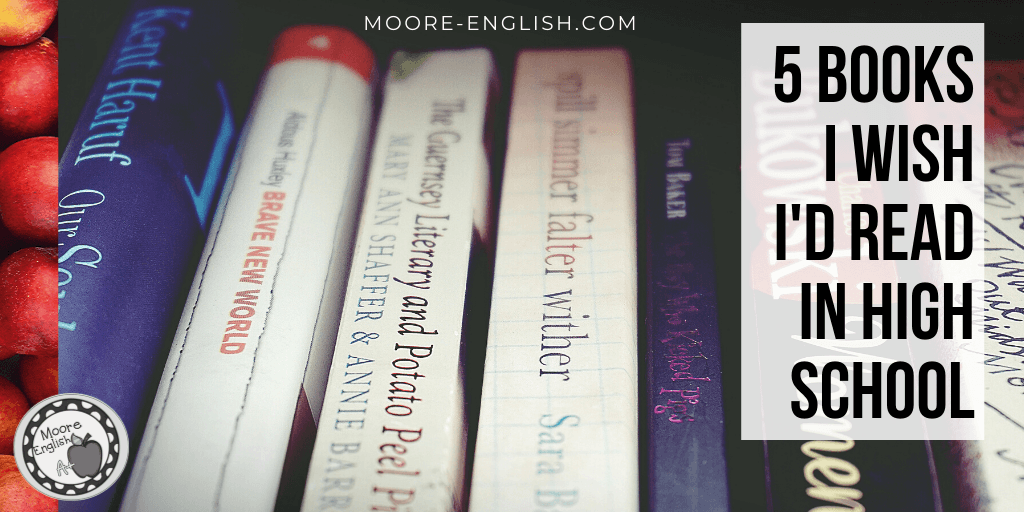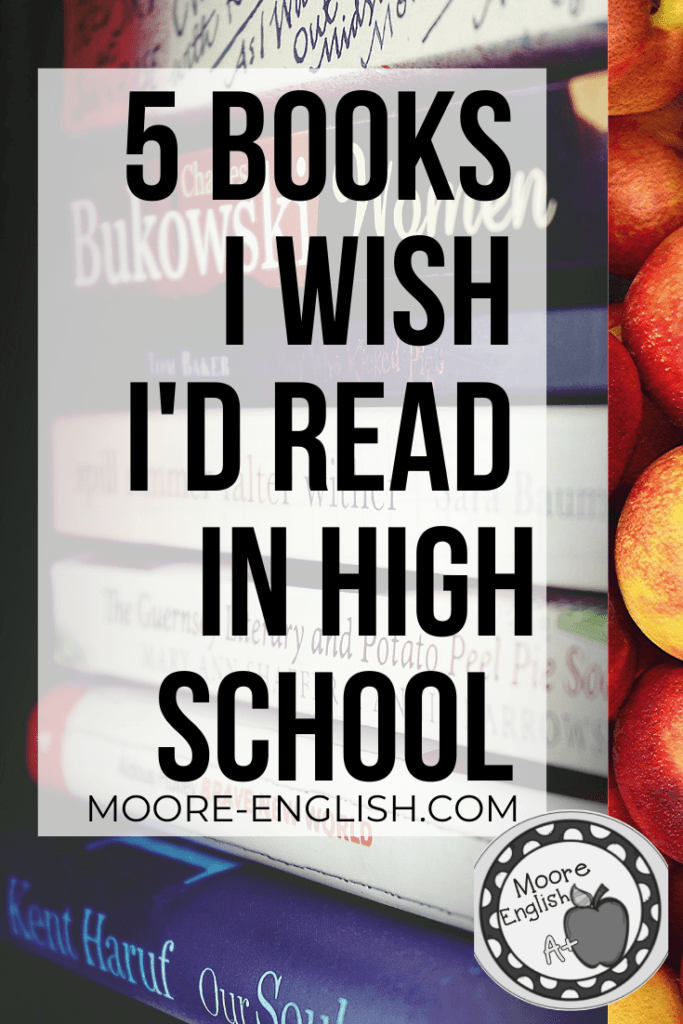This post was originally published in 2018 and revised in 2019.
A few weeks ago, I wrote about the importance of diverse classroom libraries. That made me think about the books I read as a high school student. I’ll post the complete list below, but here are some statistics. Except for To Kill a Mockingbird, none of the books were by women authors. I was a senior before any of the texts featured strong women in leading roles. And those women were Lady Macbeth and Antigone, both of whom die. Except for Things Fall Apart, none of the books were by black authors. And I don’t think this is shocking. I think my high school teachers drew on a pretty typical set of texts.
In fact, I was well into my teacher career before the issue of text diversity drew my attention. Now, that says as much about my own privilege as it does about anything else. However, increased exposure to and study of non-white, non-canon literature has become a greater part of my classroom each year. The more I read and the more I learn and the more teachers I connect with, the more I learn and grow. And when my students read canon texts like To Kill a Mockingbird and The Great Gatsby, we engage in consideration of how the text treats minorities, handles privilege, and supports heroic narratives.
With all this in mind, I wanted to revise this post. Here are the novels and dramas, short stories, and nonfiction I wish I’d read in high school, anachronisms included. Some would have created a more diverse reading canon. Others would have introduced a richer understanding of the world and would have challenged my thinking.

This post this post may contain affiliate links. Please read the Terms of Use.
Nonfiction
I do not remember any of the nonfiction I read in high school. From a teaching perspective, that suggests two things: first, we probably did not read enough nonfiction and, second, we probably did not read compelling nonfiction. By “compelling,” I mean nonfiction that challenges while it informs. With this in mind, I have two nonfiction texts I wish I’d read in high school.
First, I wish my teachers would have paired W.E.B. DuBois’ The Souls of Black Folk with either To Kill a Mockingbird or The Adventures of Huckleberry Finn. DuBois’ description of “double consciousness” is an idea that resonates and that clearly plays out in our world. There’s so much about being an antiracist teacher that I’m still learning. And I wish my own teachers have been more actively antiracist.
Second, I was senior in college before I read anything about how society constructs knowledge through narrative. In college, I read about myth, ritual, and discourse in Bruce Lincoln’s Discourse and the Construction of Society, which I mentioned here. However, that text is highly technical and couched in anthropological study of religion. So I don’t know that it’s a text for high-school classrooms. However, Aldous Huxley’s essay “Words and Behavior” does an excellent job describing the impact of language (and its use and misuse). Huxley’s essay is dense, yes, but its arguments remain relevant.
Novels
–The House on Mango Street by Sandra Cisneros. When I was growing up, I assumed everyone else was Catholic and Italian like me, so I think a more diverse set of readings would have better exposed me to alternative perspectives and helped inculcate a sense of empathy that has been hard won. Apart from that, Cisneros’ novel is like nothing else. Her characters are rich, complex, and they win you over.
–Beloved by Toni Morrison. Last year, my co-worker taught Beloved for the first time in her AP Literature class. Her students’ reactions were varied: confusion, anger, devastation. The variety of reactions in her students is evidence of why this is a book worth reading in the classroom. The classroom provides a safe space for students to explore their emotions, especially difficult emotions. The old adage is that teachers do not teach what to think but how to think. And teaching this novel is a masterclass in helping students think through difficult emotions, decisions, and situations. So I wish I’d had that opportunity in high school.
–The Great Gatsby by F. Scott Fitzgerald. I know, right? It still mystifies me how I graduated from high school without any teacher ever assigning this text. I didn’t read it until I was student teaching. Since then, Fitzgerald’s commentary on class, gender roles, expectations, and the American dream has continued to resonate.
–Grendel by John Gardner. I am not a huge Beowulf fan, but Gardner’s spin on philosophy, identity, and the nature of evil retells the age-old epic in an entirely new light. When I read this with my seniors two years ago, their reading of this text affected how they viewed every “villain” for the rest of the year. A text that encourages readers to empathize with the beast that minted the monster archetype is worth reading. High-school me could have practiced empathy more often.
Poetry and Short Stories
As a high school student, I did not love poetry, but, then, I don’t think anyone taught me how to read poetry until much later. I also don’t think I understood that poetry has form, meter, and shape and rhythm that affects its meaning. For this reason, I wish I’d met the poetry of Gerard Manley Hopkins much earlier. No one before or since has manipulated sound and syntax to such victorious euphony.
Similarly, I don’t remember reading many women poets, so I never understood that poetry can also be an act of protest. It certainly is in Maya Angelou’s “Caged Bird” and in Dorothy Parker’s “Penelope.”
Likewise, the short story “A New England Nun” by Mary E. Freeman may very well be an act of protest. This is one of those short stories that can be understood 10,000 ways, and the ending is so divisive–is it a meditation on the injustice of gender roles or a commentary on the comfort of complacency? Read it and let me know what you think. My seniors and I read this last year, and it produced rich discussion.
Anachronisms
These are texts that didn’t exist when I was in high school. Nevertheless, they are texts that sixteen-year-old me would have benefited from reading.
Novel: The Hate U Give by Angie Thomas. When I was in high school, Thomas’ novel was not around. In fact, nothing like it was on my bookshelf, but this is an absolute must-read. The writing is timely, relevant, and cuts to the quick.
Poem: “Us vs Them” by David Tomas Martinez. I was a senior in high school before I heard anyone challenge or question the American Dream. Is it real? Illusionary? Dangerous? Accessible? Equitable? Martinez asks many of these questions in this poem, which is part of why I now include it in my unit on The Great Gatsby.
Nonfiction: “Privileged” by Kyle Korver and “The Danger of a Single Story” by Chimamanda Ngozi Martinez are two texts I’ve mentioned a lot. However, they are texts I keep going back to again and again. I think that my frequent returns to these texts as an adult suggests I would have benefited from reading them much sooner.
Of course, there are more titles I could have included. Honorable mentions include: Daisy Miller by Henry James (one of my favorites!), Northanger Abbey by Jane Austen (hilarious), Sula by Toni Morrison (devastating but powerful), and The Handmaid’s Tale by Margaret Atwood (a different kind of devastating).
Here’s what I actually read in school. What do you wish you had read in high school?
- Freshmen year: The Odyssey, Romeo and Juliet, and To Kill a Mockingbird
- Sophomore year: The Strange Case of Dr. Jekyell and Mr. Hyde, The Merchant of Venice, and Lord of the Flies
- Junior Year: The Adventures of Huckleberry Finn and The Crucible
- Senior Year / AP Literature: Things Fall Apart, Heart of Darkness, The Things They Carried, Macbeth, The Oedipus Cycle, and Frankenstein







